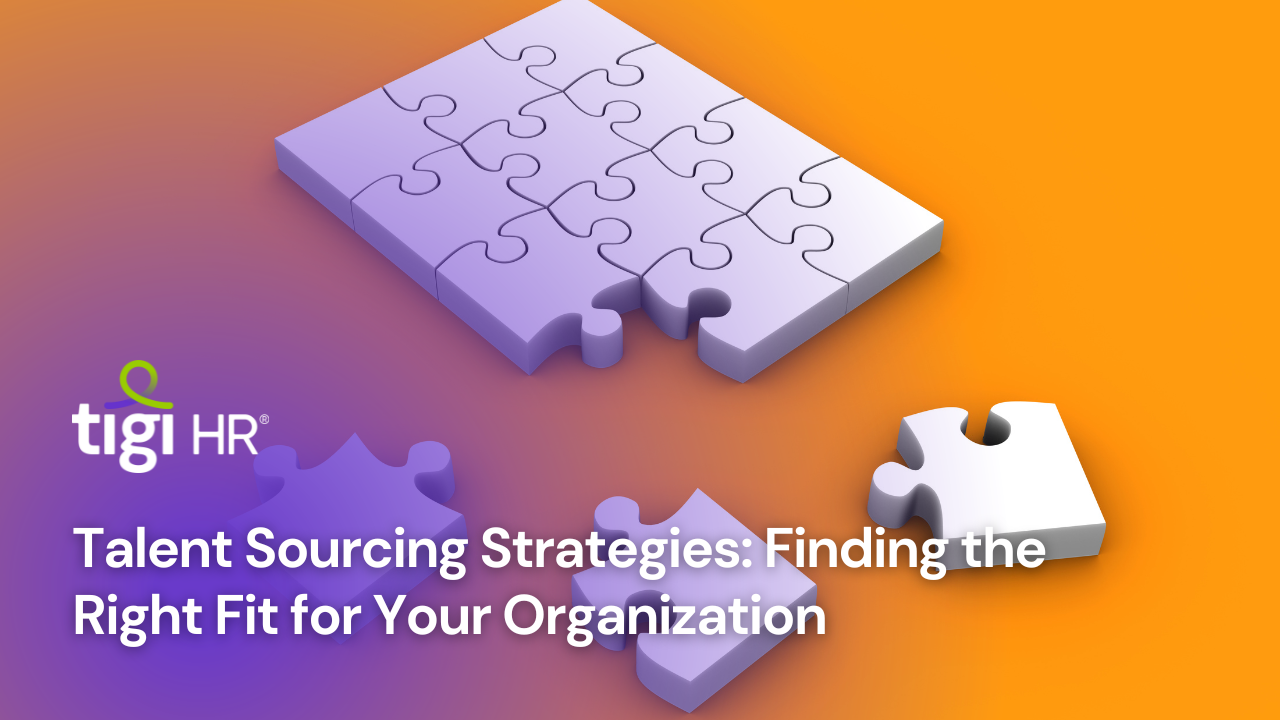In today’s highly competitive job market, organizations are constantly seeking the best talent to help them achieve their business goals. Talent sourcing has evolved significantly over the years, moving beyond traditional methods to more sophisticated and data-driven approaches. Finding the right fit for your organization is no longer just about posting job listings and hoping for the best. In this article, we will explore talent sourcing strategies that are not only effective but also aligned with the ever-changing landscape of recruitment.
- The Evolving Landscape of Talent Sourcing
Talent sourcing has come a long way from the days of newspaper classified ads and physical resumes. With the advent of technology and the internet, the process has become more efficient and data-driven. Here are some key trends in the evolution of talent sourcing:
a. Online Job Portals: Job seekers now rely heavily on online job portals, making it essential for organizations to have a strong online presence. Statistics show that 73% of job seekers use online job boards as their primary job search method (Source: Pew Research Center).
b. Social Media Recruiting: Platforms like LinkedIn, Twitter, and even Facebook have become valuable tools for recruiters. Around 87% of recruiters use LinkedIn to source candidates (Source: Jobvite).
c. Data Analytics: Big data and analytics have become integral to talent sourcing. Recruiters use data-driven insights to make informed decisions about candidates and to predict future talent needs (Source: SHRM).
d. Artificial Intelligence (AI) and Machine Learning: These technologies are increasingly used to screen resumes, automate tasks, and match candidates with job openings. AI can reduce time-to-hire by 50% (Source: LinkedIn).
- Importance of Finding the Right Fit
Hiring the right talent is crucial for any organization’s success. A bad hire can be costly in terms of time, money, and morale. According to a study by the Society for Human Resource Management (SHRM), the cost of a bad hire can be up to five times the bad hire’s annual salary.
Finding the right fit goes beyond skills and qualifications. It’s about aligning the candidate’s values, personality, and goals with the organization’s culture and mission. When employees are a good fit for their roles and the company, they tend to be more engaged, productive, and satisfied, which can lead to reduced turnover and higher overall performance.
- Effective Talent Sourcing Strategies
Now, let’s delve into some effective talent sourcing strategies that can help your organization find the right fit.
a. Employer Branding: Your organization’s reputation matters. A strong employer brand can attract top talent. Use social media, your website, and employee testimonials to showcase your company culture and values. According to a LinkedIn survey, companies with strong employer brands have a 50% lower cost per hire.
b. Referral Programs: Encourage your employees to refer potential candidates. Employee referrals often result in better hires who are more likely to stay with the company. Data from the Society for Human Resource Management (SHRM) suggests that 46% of new hires sourced through employee referrals are retained for at least one year.
c. Networking: Attend industry events, join professional associations, and use LinkedIn to build a strong network. A study by Lou Adler found that 85% of jobs are filled through networking.
d. Diversity and Inclusion: Diverse teams are more innovative and better equipped to solve complex problems. Make diversity a priority in your talent sourcing strategy. In a McKinsey report, companies in the top quartile for ethnic and racial diversity are 35% more likely to have financial returns above their respective national industry medians.
e. Data-Driven Sourcing: Utilize data analytics and AI to identify potential candidates. These tools can help you target the right audience, assess candidate fit, and predict future talent needs.
f. Candidate Relationship Management (CRM): Just as you manage relationships with your customers, you should maintain relationships with potential candidates. CRM tools help you stay in touch with promising candidates even if there are no immediate openings.
g. Content Marketing: Create informative and engaging content related to your industry. This can help you establish authority and attract talent interested in your field. Content marketing can also be used to educate potential candidates about your company culture.
- Measuring Success
To gauge the effectiveness of your talent sourcing strategies, it’s essential to use key performance indicators (KPIs) and regularly assess your efforts. Here are some metrics to consider:
a. Time-to-Hire: How long does it take to fill a position from the moment it’s posted? Reducing this time can save money and improve candidate experience.
b. Quality of Hire: Measure the performance and fit of employees hired through different channels. Are employees sourced through referrals performing better than those from job boards?
c. Cost-per-Hire: Calculate the cost of hiring for each sourcing channel. This includes advertising expenses, agency fees, and HR salaries.
d. Retention Rate: Track how long employees hired through various channels stay with the company. High retention is a sign of good fit.
e. Diversity Metrics: Monitor the diversity of your candidate pool and new hires. Ensure that you are making progress in creating an inclusive workforce.
f. Candidate Satisfaction: Survey candidates about their experience with your organization’s recruitment process. Positive feedback can attract more talent.
- Challenges in Talent Sourcing
While effective talent sourcing can greatly benefit your organization, there are challenges that you might encounter. Understanding these challenges and developing strategies to overcome them is crucial.
a. Competition: The war for talent is real, especially in industries where specialized skills are in high demand. Being aware of your competition and highlighting your unique selling points can help you stand out.
b. Talent Shortages: Some industries are facing severe talent shortages. In this case, consider investing in training and development programs to grow your own talent.
c. Screening and Assessment: Sorting through a large number of resumes and applications can be time-consuming. Implementing AI-driven resume screening and assessment tools can streamline the process.
d. Diversity and Inclusion: Building a diverse workforce can be challenging, but it’s essential. Invest in diversity and inclusion training for your employees and leadership.
e. Changing Workforce Expectations: New generations of workers have different expectations about work, such as remote work options and flexible schedules. Being adaptable to these changing expectations can make your organization more attractive.
- Case Studies: Successful Talent Sourcing Strategies
Let’s look at a few real-world examples of organizations that have successfully implemented talent sourcing strategies to find the right fit.
a. Google: Google is known for its rigorous recruitment process. The company evaluates candidates not just for their technical skills but also for their cultural fit. They focus on attributes like problem-solving, creativity, and leadership. Google has also embraced diversity and inclusion, setting ambitious goals to create a more representative workforce.
b. Zappos: The online shoe and clothing retailer Zappos offers new hires $2,000 to leave the company after their initial training. This unique approach ensures that only those who truly align with the company’s culture and values remain. It’s a bold move but one that has contributed to their strong corporate culture.
c. Salesforce: Salesforce uses a combination of AI and data analytics to source talent. Their CRM tool helps them manage relationships with potential candidates, keeping them engaged until the right
opportunity arises. This approach has been highly successful in attracting top talent.
- The Role of Technology
Technology plays a pivotal role in modern talent sourcing strategies. Here are some ways in which technology can be harnessed to find the right fit for your organization:
a. AI-Powered Resume Screening: AI can analyze resumes and identify the most qualified candidates. This not only saves time but also ensures that no potential fit is overlooked.
b. Applicant Tracking Systems (ATS): ATS software helps manage the recruitment process, from posting jobs to evaluating candidates. It streamlines the process and allows for better organization and collaboration.
c. Video Interviews: Video interviews can save time and resources by allowing initial interviews to be conducted remotely. They are especially useful for assessing a candidate’s communication skills and personality fit.
d. Data Analytics: Analyzing data related to your hiring process can provide insights into what’s working and what needs improvement. It can help you refine your talent sourcing strategy over time.
e. Social Media and Professional Networks: Leveraging platforms like LinkedIn, Twitter, and Facebook can help you reach a wide audience of potential candidates. These networks also provide tools for targeting specific demographics.
- Regulatory Considerations
It’s important to be aware of the legal and regulatory aspects of talent sourcing. Discriminatory practices in recruitment can result in costly lawsuits and damage to your organization’s reputation. Here are a few key points to consider:
a. Equal Employment Opportunity (EEO) Laws: Ensure that your talent sourcing strategies comply with EEO laws, which prohibit discrimination on the basis of race, color, religion, sex, national origin, and other protected categories.
b. Affirmative Action: Some organizations are required to have affirmative action plans to promote equal employment opportunities. Be aware of any obligations related to affirmative action in your region or industry.
c. Data Privacy: Protect the personal data of candidates in accordance with data privacy regulations, such as the General Data Protection Regulation (GDPR) in Europe.
d. Age Discrimination: The Age Discrimination in Employment Act (ADEA) prohibits age discrimination against employees who are 40 years of age or older.
- Future Trends in Talent Sourcing
As technology continues to evolve, so will talent sourcing strategies. Here are some future trends to keep an eye on:
a. Virtual Reality (VR) and Augmented Reality (AR): These technologies can be used for immersive job previews, allowing candidates to experience a day in the life of an employee.
b. Blockchain: Blockchain technology can be used for secure verification of candidate credentials, reducing the risk of resume fraud.
c. Predictive Analytics: Advanced analytics will become more accurate in predicting a candidate’s performance and fit with the organization.
d. Remote Work: The trend toward remote work is likely to continue, and organizations will need to adapt their talent sourcing strategies to find and manage remote talent effectively.
Conclusion
In a world where talent is a valuable commodity, effective talent sourcing is a critical component of any organization’s success. Finding the right fit goes beyond skills and qualifications; it’s about aligning values, personality, and goals. By embracing technology, data-driven insights, and innovative strategies, organizations can attract top talent and build a workforce that contributes to their long-term success. The evolution of talent sourcing is ongoing, and staying updated with the latest trends and regulations is essential to remain competitive in the global job market.
Remember, finding the right fit is not just about filling positions; it’s about building a strong and engaged workforce that can drive your organization forward in an ever-changing world.





